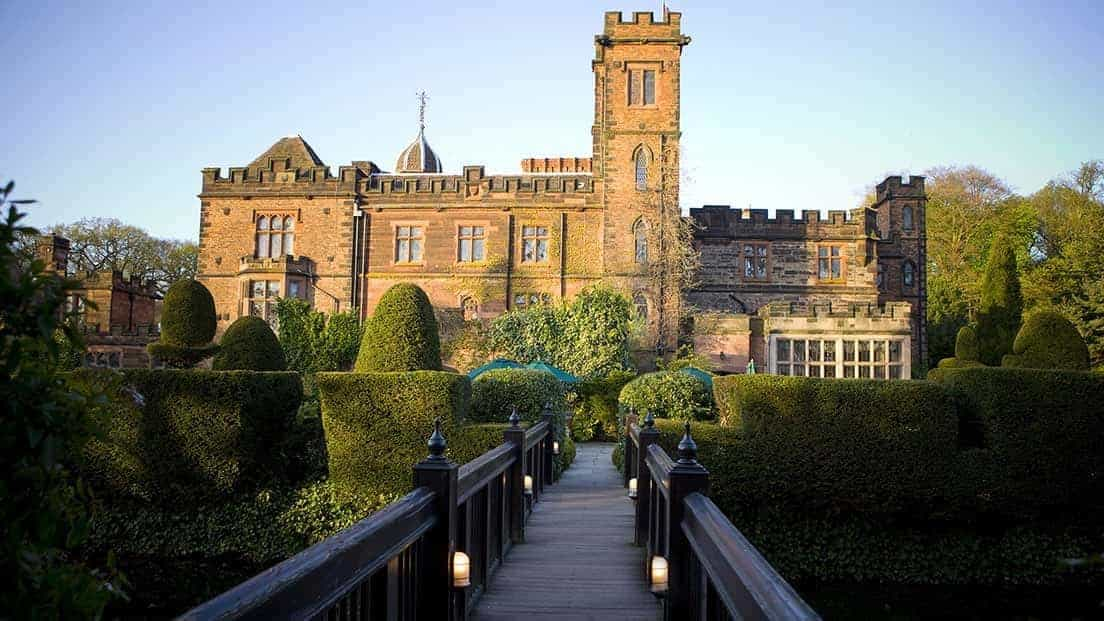New Hall is reputed to be the oldest listed inhabited moated house in England. Before the Norman Conquest the land was owned by Edwin, Earl of Mercia, who was executed by William the Conqueror in 1071 and his property annexed by the crown.
In 1126 Henry І exchanged it for other lands with Roger de Newburgh, Earl of Warwick. By 1340 the estate was held by another Earl of Warwick, Thomas Beauchamp, who in the following year released it to Sir John Lizours, a Knight, using the name New Hall for the first time.
During the War of the Roses, 1455-1487, the fortunes of the Hall waxed and waned, as did those of the Earls of Warwick, and in 1487 Anne, Countess of Warwick, ceded it again to the crown. By 1525 William Gibbons was in residence and it was his son, Thomas Gibbons, who made the first extensions in 1542.
The year 1590 saw the advent of perhaps the most notable ancient family to occupy the hall, when Henry Sacheverall of Morley and Callow bought the estate and began improving the house. On his death in 1620 it passed to his son Valens, and he in turn was succeeded by his son George, who had for his chaplain the famous Jacobite firebrand Dr Henry Sacheverall (no relation).
George’s great nephew, Charles Sacheverall Chadwick, a descendant of one of the Knights who fought for the conqueror at Hastings, inherited the estate in 1715. The house remained a Chadwick possession until 1897, though it was used as a boys school for a few years.
John de Heley Chadwick, the last of the Chadwick family to reside at New Hall, added to its size and appearance in 1870 by enlarging the north wing and building up the central tower.
Walter Wilkinson purchased the estate in 1903 and lived at the Hall for the remainder of his life. Alfred Ernest Owen was the next owner in 1923, and New Hall later became the home of his famous son, Sir Alfred Owen, chairman of Rubery Owen and Company.
Michael Blakemore, another Midland businessman, was the last person to live at New Hall before it was bought by Thistle Hotels in 1985 and then in 2008 by Hand Picked Hotels.
The Great Hall and the Dining Room are of Anglo Saxon origin. The walls of the Great Hall are lined with Oak panelling of the late 16th Century. Fine mullioned windows contain medallions of Flemish glass of excellent 16th Century workmanship. The fire place is 17th Century with a carved oak overpiece.
In the Dining Room the moulded stone fireplace is late 17th Century. The 16th Century Flemish glass has old Dutch wording. Other windows have the Sacheverall Arms and Crests of the various branches of the Sacheverall family and the “Fate of the Cow” is shown in three insets.
The Great Chamber originally constructed in 1542 by Thomas Gibbons, was enlarged by Henry Sacheverall at the end of the 16th century, the oak panelling being of this period. The fine ribbed ceiling of moulded plasterwork, adorned with ormolu and gilt, is also Elizabethan. The windows are glazed with small leaded quarters and many have diamond writings by George Sacheverall, dated 1689. Two superb 18th Century chandeliers complete the room.
The moat, originally formed in medieval times to provide protection, is fed by seven springs. The terraces south of the moat are 16th or 17th century and other features of the garden were probably added during the 18th and 19th centuries. The grounds have extensive established shrubbed and wooded areas.
